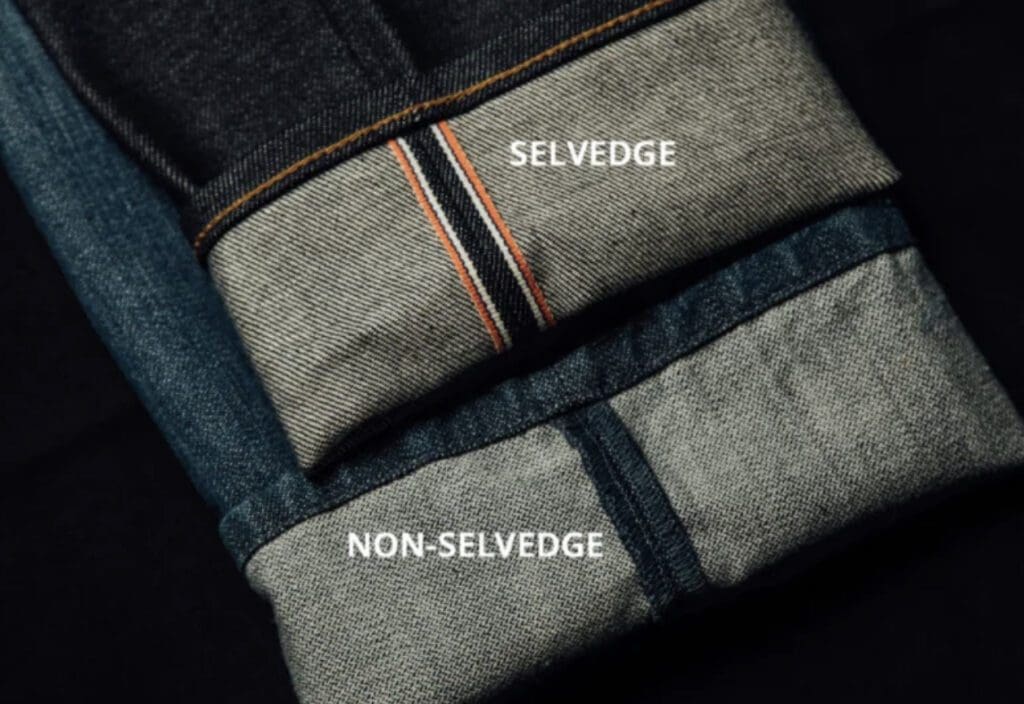Share This Article

The Kojima district outside Tokyo was once known for manufacturing school uniforms and canvas sails but today those same fabric looms are being used to create denim fabric and the industry is growing massively with demand for Japanese Denim coming from all over the world.
The demand for quality indigo jeans has seen the major brands responding with unique Japanese denim options global denim giant Levi’s (a company over 170 years old and renowned for denim jeans) have a Japanese Levi brand with Japanese Denim and the Japanese Indigo Blue dye.
Now Japanese Denim has become some of the most expensive and sought after in the world.
Its all in the weave
Denim is first said to have come from the township of France and the word Denim’ originated as a contraction of the French phrase serge de Nîmes meaning ‘fabric from Nîmes‘ shortened to ‘from Nimes’ (de Nimes).
Denim is a tough fabric recognised for is specific weave in which the weft passes under two or more warp threads to produce a diagonal ribbing. The warp thread is most commonly dyed a colour (often a shade of blue) and the weft is left white, this creates a dark outer to the jeans and a light inside.

Its all in the weave, and it is part of what makes Japanese Denim sought after is quality and long life of the fabric including selvedge. The word ‘selvedge’ apparently comes from the phrase “self-edge” and relates to the way the weave prevents the fabric from unravelling when it’s not hemmed. Originally Japanese denims were made using looms that were very manual and made a dense, tight weave. A traditional Japanese selvedge denim often has a red stripe woven in (though other colours can be found in recent years).
A Different Blue
Part of what makes Japanese denim so special is the colour – the indigo dye used is unique, it’s a dark blue, almost purple and different from the ‘navy’ or ‘royal blue’ colours you would normally associate with a pair of jeans.
Indigo dye was originally used in traditional dress kimono’s and after the Second World War the demand for denim increased but with that demand was a preference for indigo jeans. Perhaps something you only notice when you look very closely is that with Indigo-dyed denim the colour is only in the longitudinal threads (or warp). So If you look very closely you can see the weft threads which remain white. Indigo dye traditionally comes from the Indigofera tinctoria plant leaves, though today many use a cheaper synthetic dye as its much cheaper than the natural alternative.
It’s no secret that the Japanese are more obsessive about fashion and sub culture than perhaps any other country in the world. That obsession extends into denim and here you see the staple of the wardrobe ‘denim jeans’ being turned from a regular clothing workhorse to some kind of art form and even a collectors item.

Today denim is very serious business in Japan, you can visit jeans street totally dedicated to denim and jeans in Kojiama, within the Okayama district (which is near Osaka), in that street there are over 30 stores fully dedicated to denim including the legendary Momotaro Jeans where you can easily spend $2,000 on a pair of jeans made on a hand operated shuttle loom.
The Kojima district was once known for manufacturing school uniforms and canvas sails but today those same fabric looms are being used to create denim fabric and the industry is growing with demand from all over the world.
Cured in Snow
In the Myoko Kogen region more renowned for skiing that denim, boutique manufacturers cure the indigo dyed denim with a process of washing and then leaving in the snow for days, which is said to make the fabric softer, the colour special and it obviously creates a certain mystique.



Combining these two characteristics gives each pair a distinctive composition that becomes more unique over time and said to be exceptionally comfortable.
SOURCES
- https://www.highsnobiety.com/p/japanese-denim-a-history-of-the-worlds-best-denim/
- https://www.wsj.com/articles/the-hottest-jeans-cost-2-000-and-are-made-in-japan-1528215523
- https://kato-brand.com/pages/what-is-selvedge-denim





